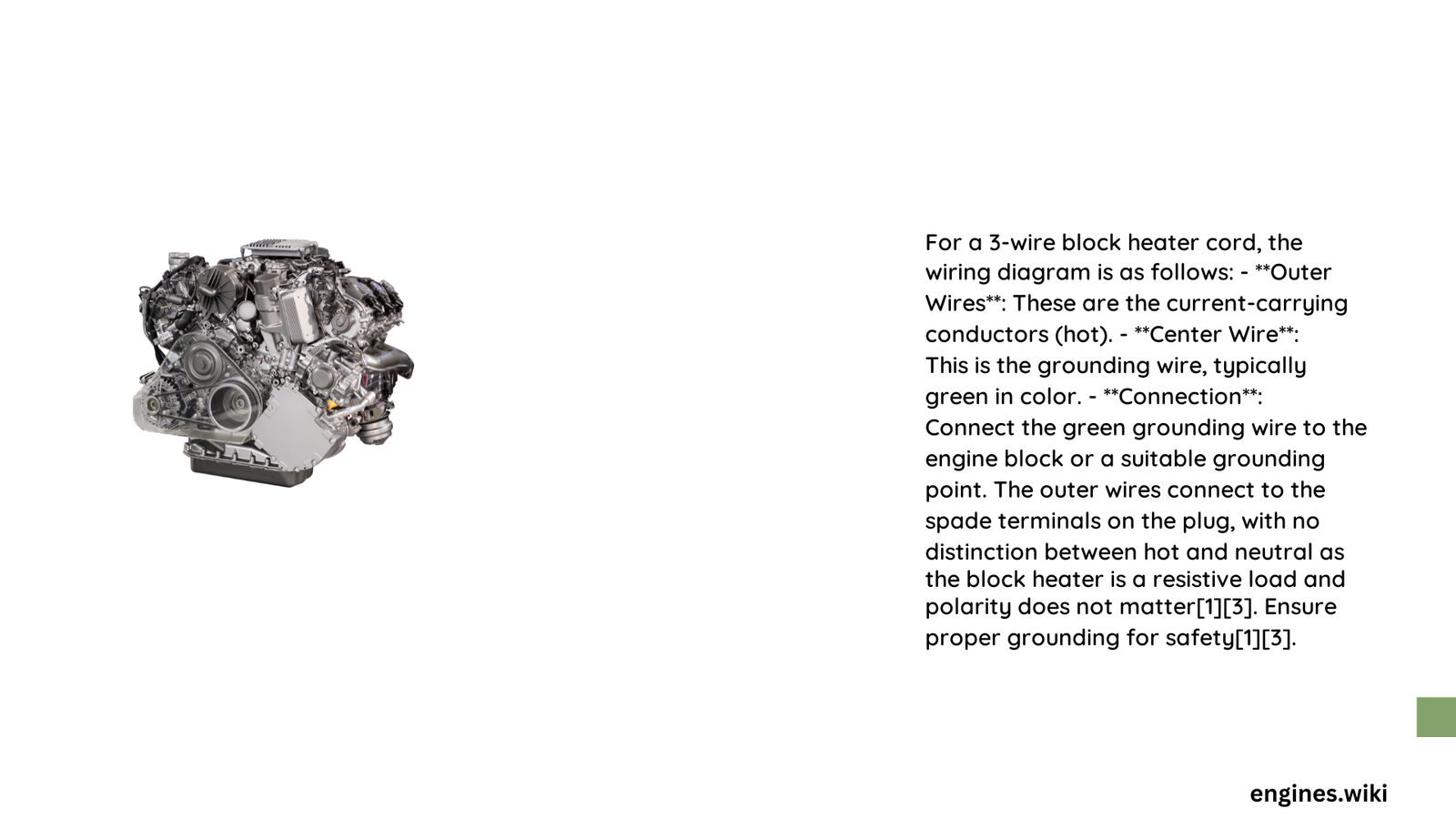Engine block heaters are critical electrical components designed to warm vehicle engines in cold climates, preventing potential damage and improving cold-start performance. A precise wiring diagram ensures safe and efficient installation, involving careful electrical connections, proper voltage management, and understanding specific terminal specifications for different vehicle models and heater types.
What is an Engine Block Heater Wiring Diagram?
An engine block heater wiring diagram represents a schematic blueprint detailing electrical connections, power requirements, and installation procedures for warming vehicle engines before startup. This technical illustration provides mechanics and vehicle owners with precise guidelines for connecting block heaters safely and effectively.
Why Do You Need a Wiring Diagram?
| Purpose | Technical Significance |
|---|---|
| Safety | Prevents electrical mishaps |
| Precision | Ensures correct voltage connections |
| Compatibility | Matches specific vehicle requirements |
| Performance | Optimizes engine pre-heating process |
Key Components of Engine Block Heater Wiring

What Electrical Components Are Involved?
- Power Source
- 120V or 230V AC electrical outlet
- Dedicated circuit with appropriate amperage
-
Grounded electrical connection
-
Heater Terminals
- Three-prong grounding plug
- Voltage-specific connection points
-
Corrosion-resistant terminals
-
Wiring Specifications
- Copper conductor wires
- Appropriate gauge based on heater wattage
- Heat-resistant insulation
Detailed Wiring Connection Process
How to Connect Block Heater Electrical Components?
Preparation Steps
- Verify vehicle’s electrical system compatibility
- Select appropriate wire gauge
- Gather necessary tools:
- Multimeter
- Wire strippers
- Electrical tape
- Heat-shrink tubing
Connection Procedure
- Disconnect vehicle battery
- Locate appropriate mounting point
- Route wiring carefully
- Secure connections
- Insulate exposed wiring
- Reconnect battery
Voltage and Amperage Considerations
What Electrical Specifications Matter?
Typical Block Heater Electrical Requirements:
– Voltage Range: 120V – 230V
– Wattage: 400W – 1500W
– Amperage: 3.3A – 12.5A
Common Wiring Challenges
What Potential Issues Might Arise?
- Incorrect wire gauge selection
- Inadequate grounding
- Voltage mismatches
- Poor terminal connections
- Improper routing
Safety Recommendations
How to Ensure Safe Installation?
- Use manufacturer-recommended components
- Follow vehicle-specific guidelines
- Employ professional installation when uncertain
- Regularly inspect wiring connections
- Use circuit protection devices
Troubleshooting Wiring Problems
What Are Common Diagnostic Steps?
- Check voltage consistency
- Inspect wire integrity
- Verify ground connections
- Test terminal continuity
- Examine insulation quality
Maintenance Tips
How to Preserve Block Heater Wiring?
- Annual professional inspection
- Clean connections
- Apply dielectric grease
- Replace worn components
- Monitor electrical performance
Conclusion
Understanding your engine block heater wiring diagram requires technical knowledge, precision, and careful attention to electrical specifications. Always prioritize safety and consult professional mechanics when encountering complex installation challenges.
